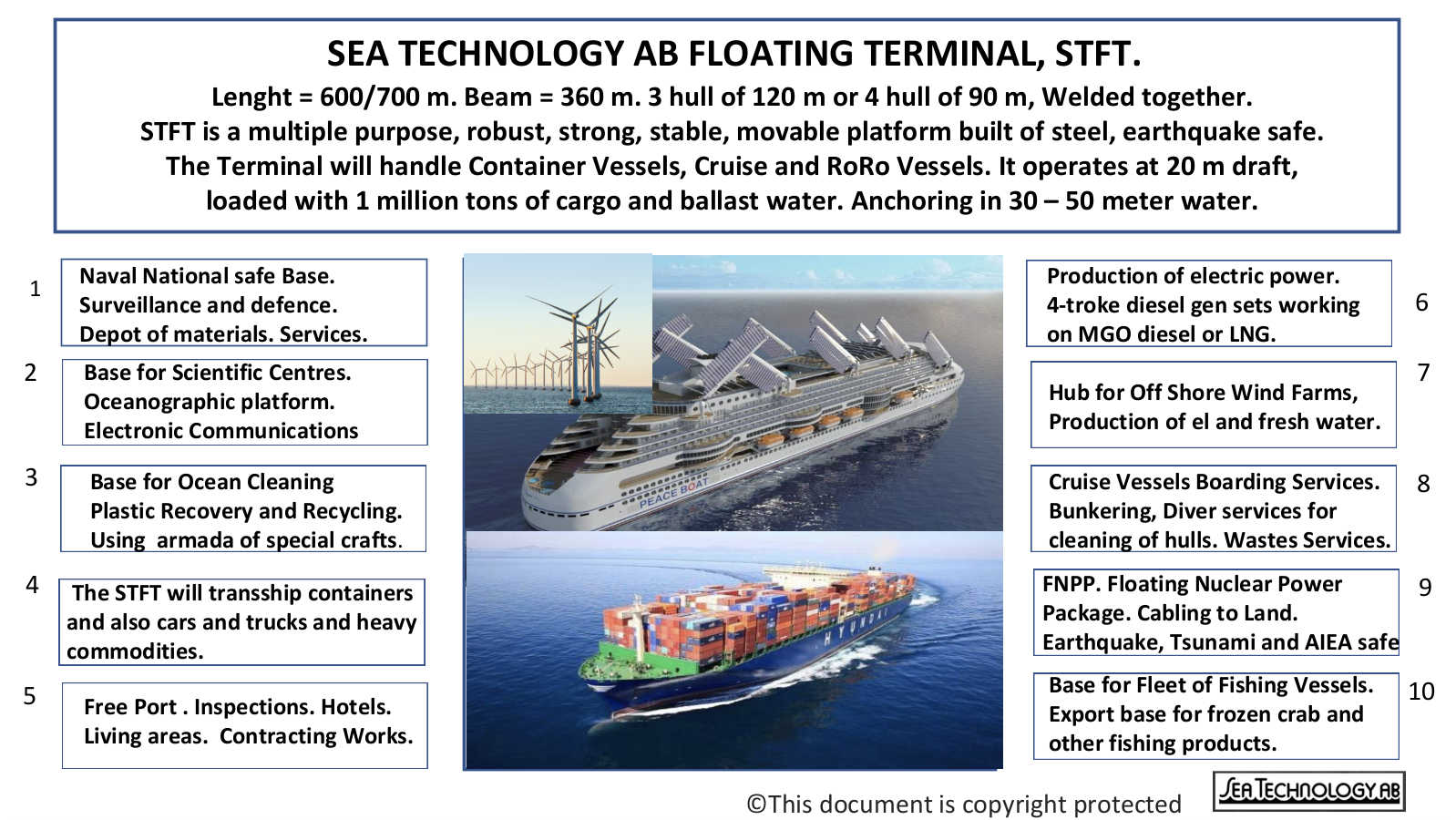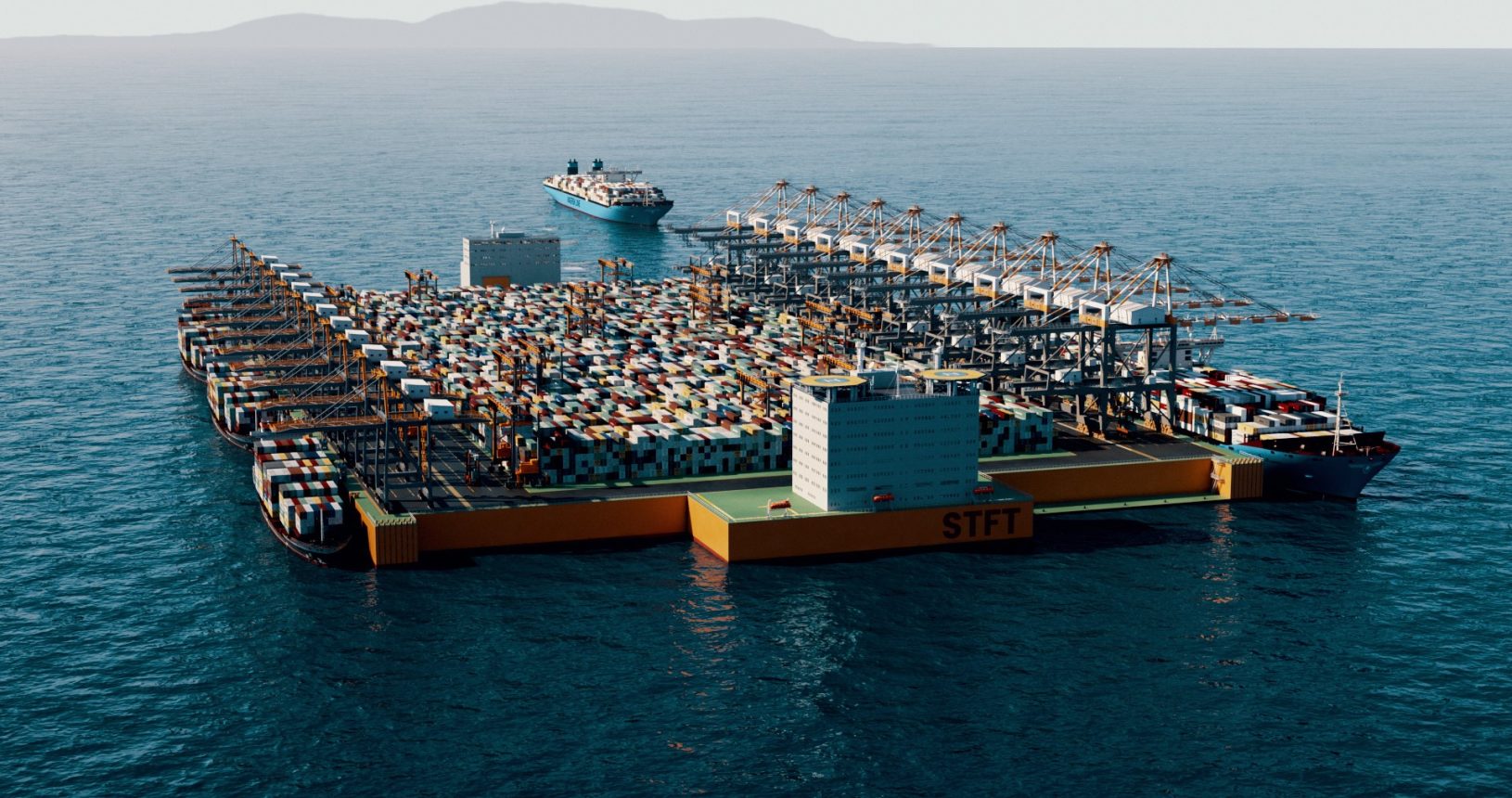The Sea Technology Floating Terminal (STFT) is an innovative floating terminal designed for large container transshipment. It is capable of handling 5-6 million TEU annually.
A floating port/terminal like the Sea Technology Floating Terminal (STFT) offers a transformative solution to the capacity and energy challenges faced by many developing regions, such as the Philippines, Indonesia and the north's arctic areas where existing infrastructure often struggles to keep up with rising trade demands. Traditional ports in these areas are often limited by shallow waters, making large-scale development projects slow, costly, and environmentally damaging.
The STFT adds significant capacity by offering a scalable, and more effective terminal solution that can be deployed quickly in regions where building new land-based ports would be financially and logistically prohibitive. With a modular design, it can handle up to 6 million TEUs annually, reducing strain on existing infrastructure and facilitating increased trade flows.
Moreover, the STFT can act as an energy hub in areas with limited energy infrastructure. With integrated freshwater production and waste-to-energy systems, the STFT can produce vital resources like fresh water and renewable energy for both its own operations and the vessels it serves. This is particularly impactful in parts of the world where energy grids are underdeveloped or unreliable. By providing clean, renewable energy and the potential to connect with feeder vessels powered by batteries or alternative fuels, the STFT can significantly reduce dependency on traditional, polluting energy sources. This also opens up opportunities for regional industries—from fishing to waste management—to integrate and benefit from a shared, multifunctional hub that supports both maritime and onshore activities.
In geographical areas, where port congestion and inadequate infrastructure frequently slow down economic growth, the STFT can offer an agile and efficient alternative that boosts trade capacity, reduces logistical bottlenecks, and minimizes environmental impacts, all while promoting sustainable energy use. The ability to deploy the STFT without extensive dredging, land reclamation, or lengthy construction timelines allows developing regions to expand capacity rapidly and tap into global trade networks more effectively.
The floating terminals can also solve challenges for other industires such as floating nulclar plants and the Cruise industy.




